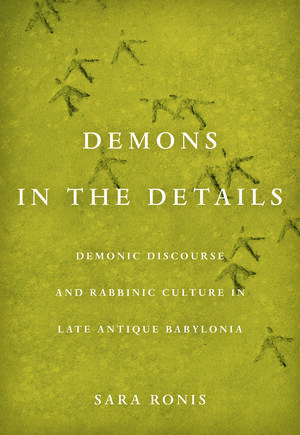By Sara Ronis, author of Demons in the Details: Demonic Discourse and Rabbinic Culture in Late Antique Babylonia
In the months leading up to this year’s midterm elections, a number of Republicans claimed that their Democratic opponents were working with demons or with the devil himself. This tactic to vilify opponents points to the heightened polarization of the current moment, but it also highlights the salience of demonological ideas to modern American political discourse.
Demons may be invisible, but they are real – in that they do real work in shaping communities, in-groups and out-groups, and understandings of the self.
In my book, Demons in the Details: Demonic Discourse and Rabbinic Culture in Late Antique Babylonia, I take the reality of demons seriously, looking at how the Jewish rabbis of Sasanian Babylonia integrated the demonic into their understanding of God, the world, and their community. The singular text they produced, the Babylonian Talmud, offers a rich understanding of a world replete with intermediary beings both visible and invisible who could – and did – cause profound harm to humans. But the rabbis also believed that the world and everything in it was created by a single benevolent God.
In Demons and the Details, I argue that the rabbis dealt with this tension in a very rabbinic way, by subjugating demons and the demonic to rabbinic law and authority. The rabbis constructed demons not only in stories but in extensive legal discussions, presenting demons as harmful only for those who do not follow rabbinic law. They essentially turned demons into rabbinic, a move which located demons firmly within the rabbinic movement. And if demons were part of the rabbinic movement, then demons were also subject to rabbinic law and even had the potential to become rabbis themselves.
The rabbis’ construction of demons is not what most modern readers might expect, especially for those of us shaped by American understandings of demons through political discourse or popular culture. It’s also not what many of their contemporaries would have expected; Sasanian Babylonia was home to Zoroastrians, Manichaeans, Mandaeans, and Christians who saw demons as only malevolent, negative, and servants of the cosmic forces of evil.
But as I show in the book, the rabbinic approach to demons is a powerful reminder that both the language of demonization and demons themselves play an important role in society, one which requires thought and care. And as their perspective teaches us, we can always choose another path.

